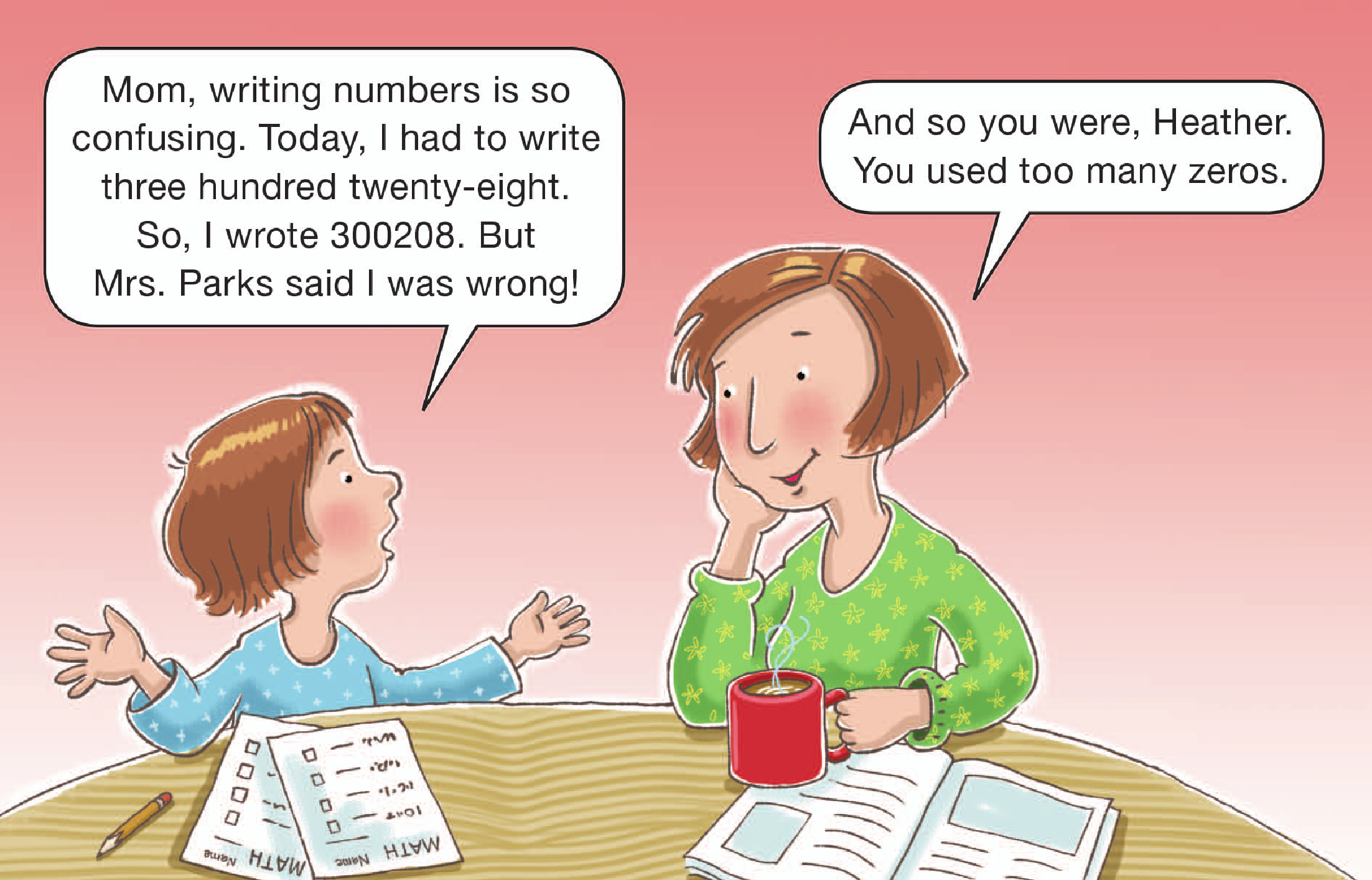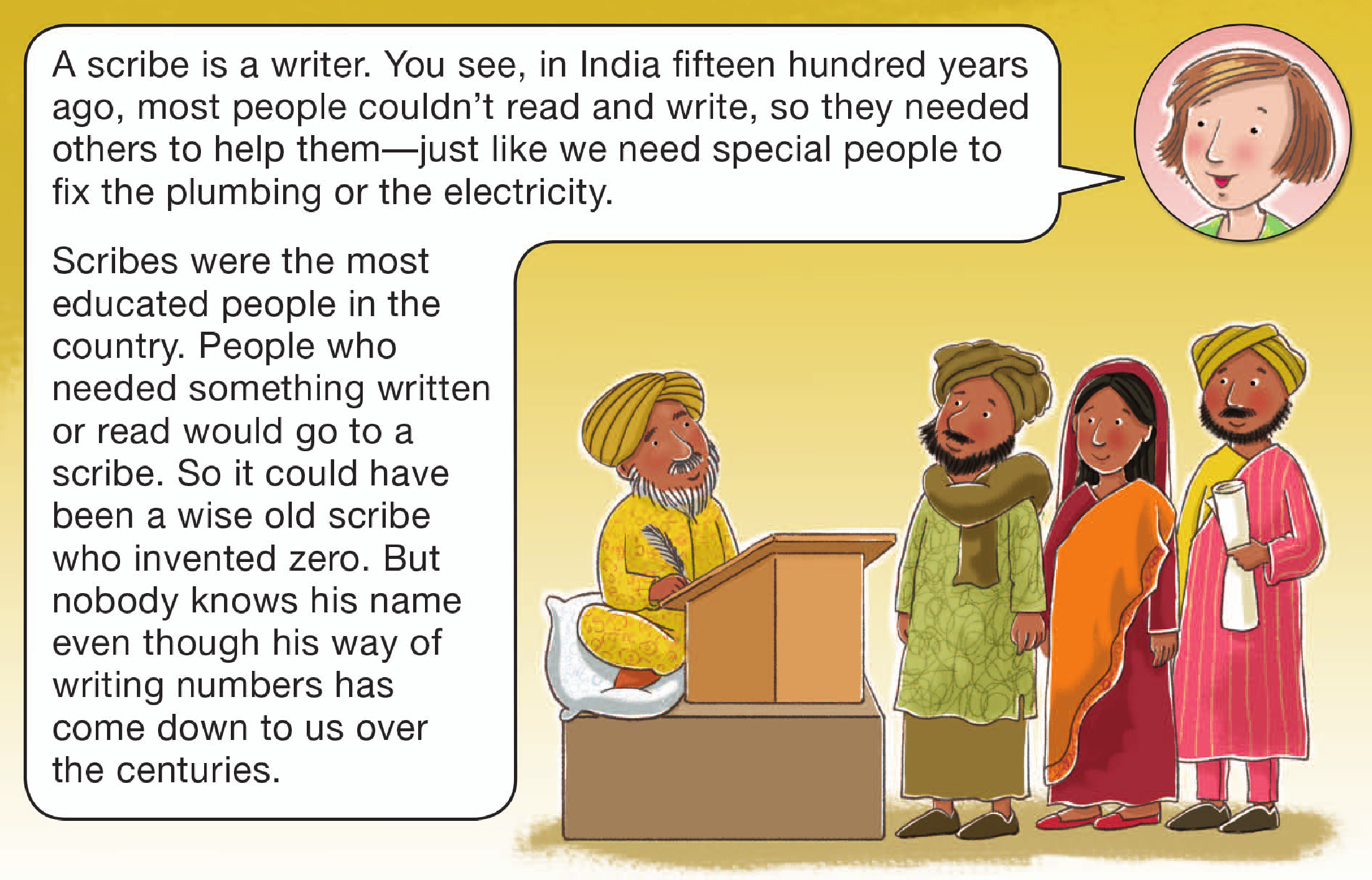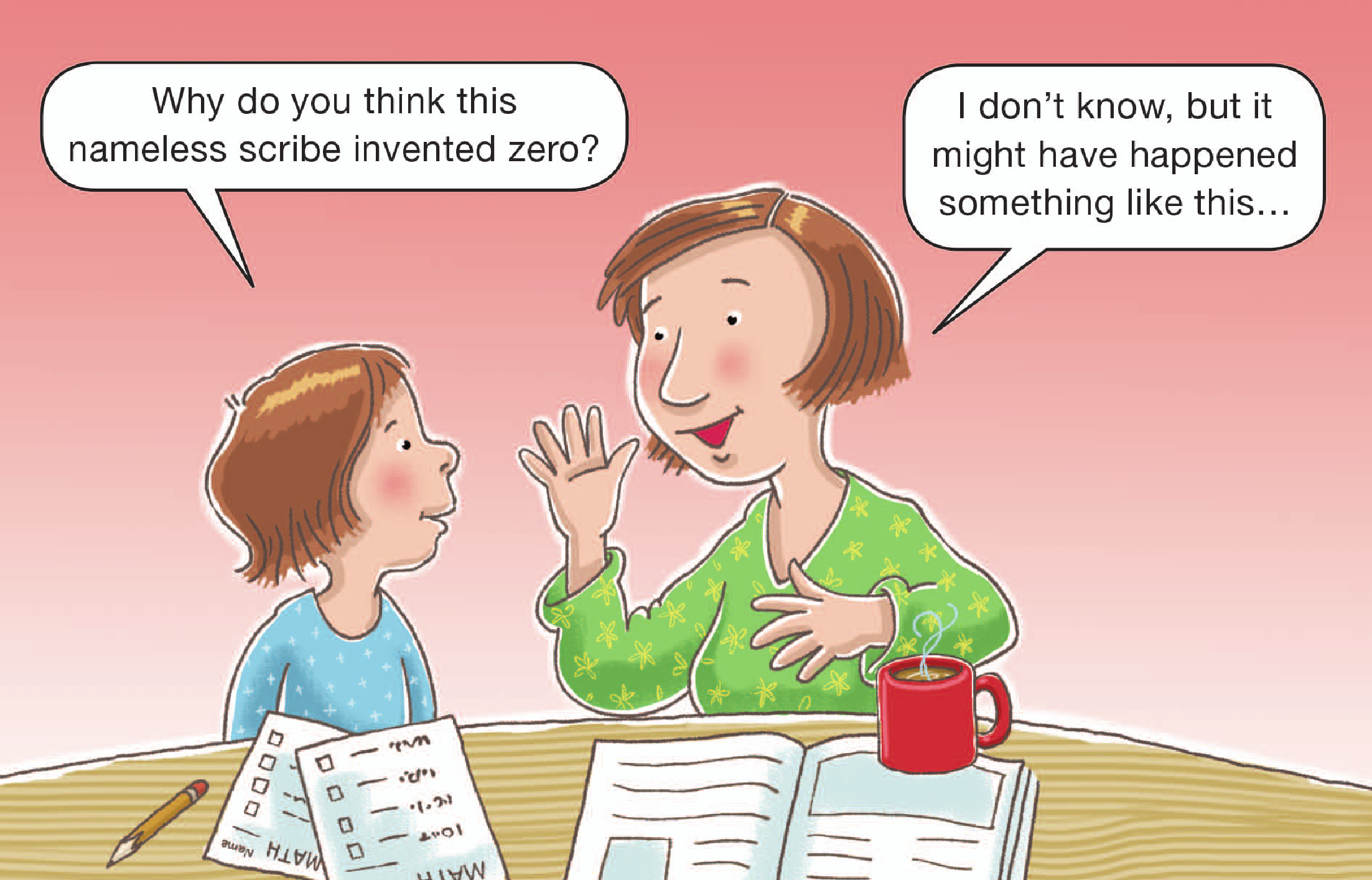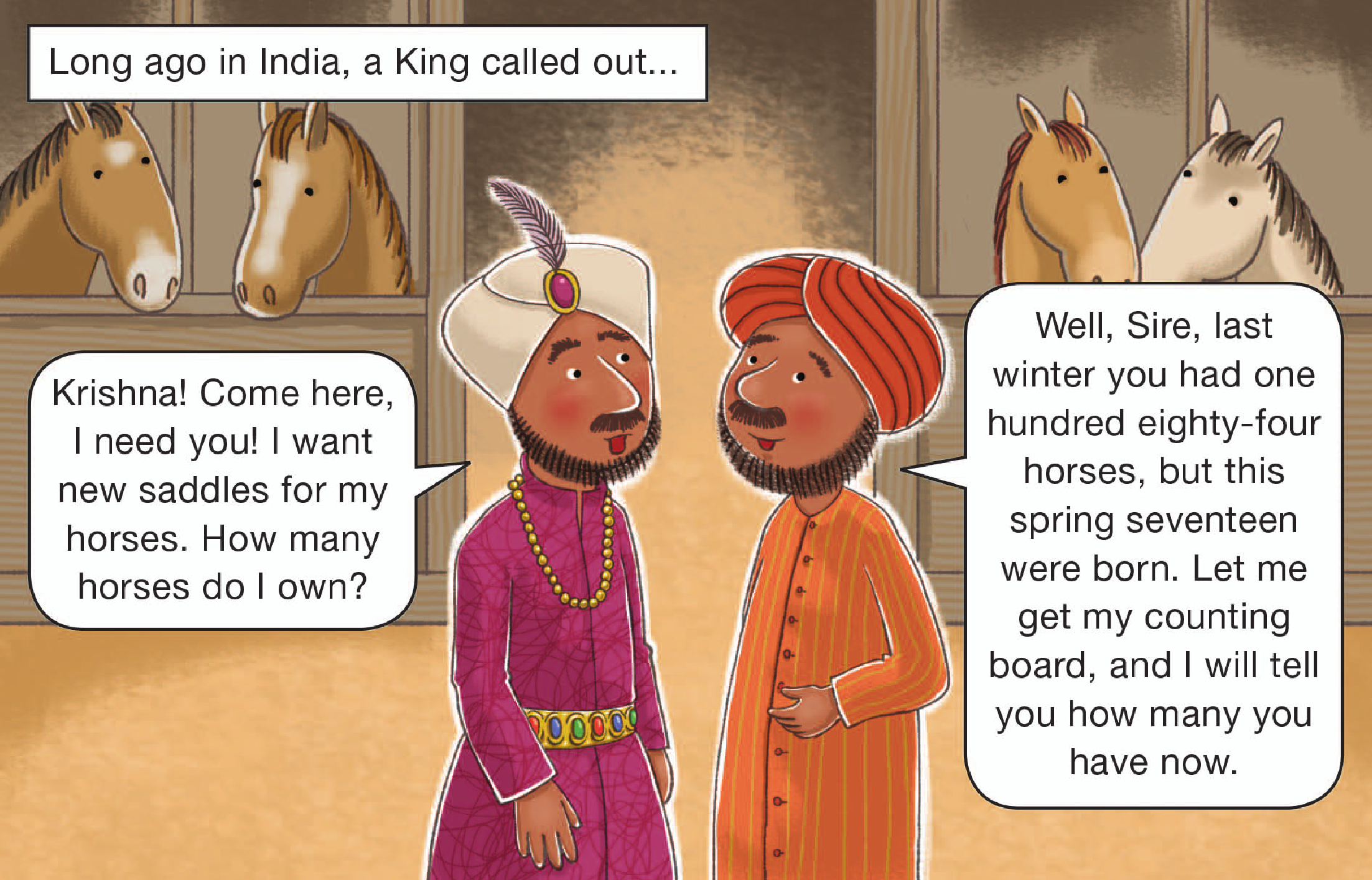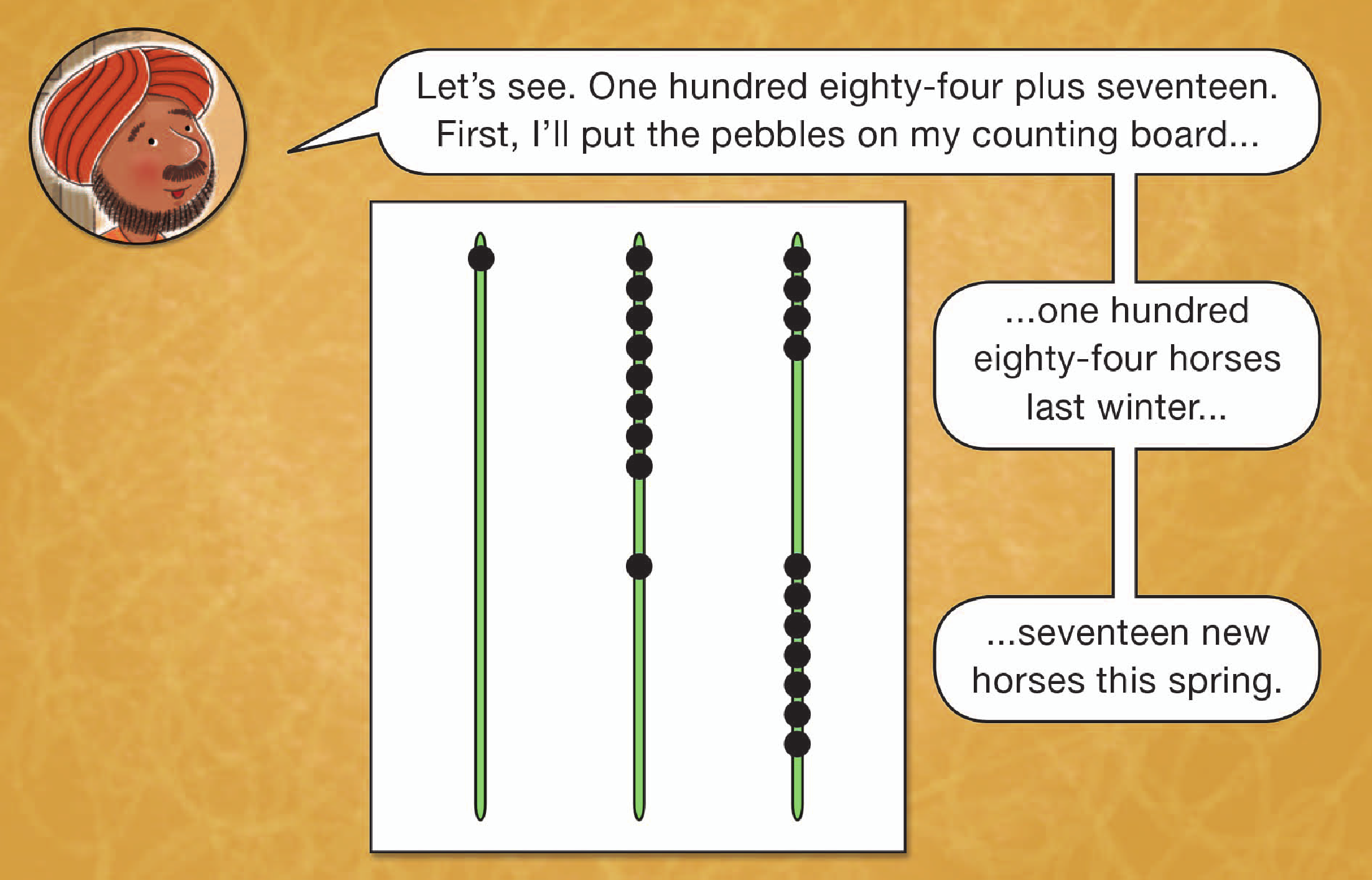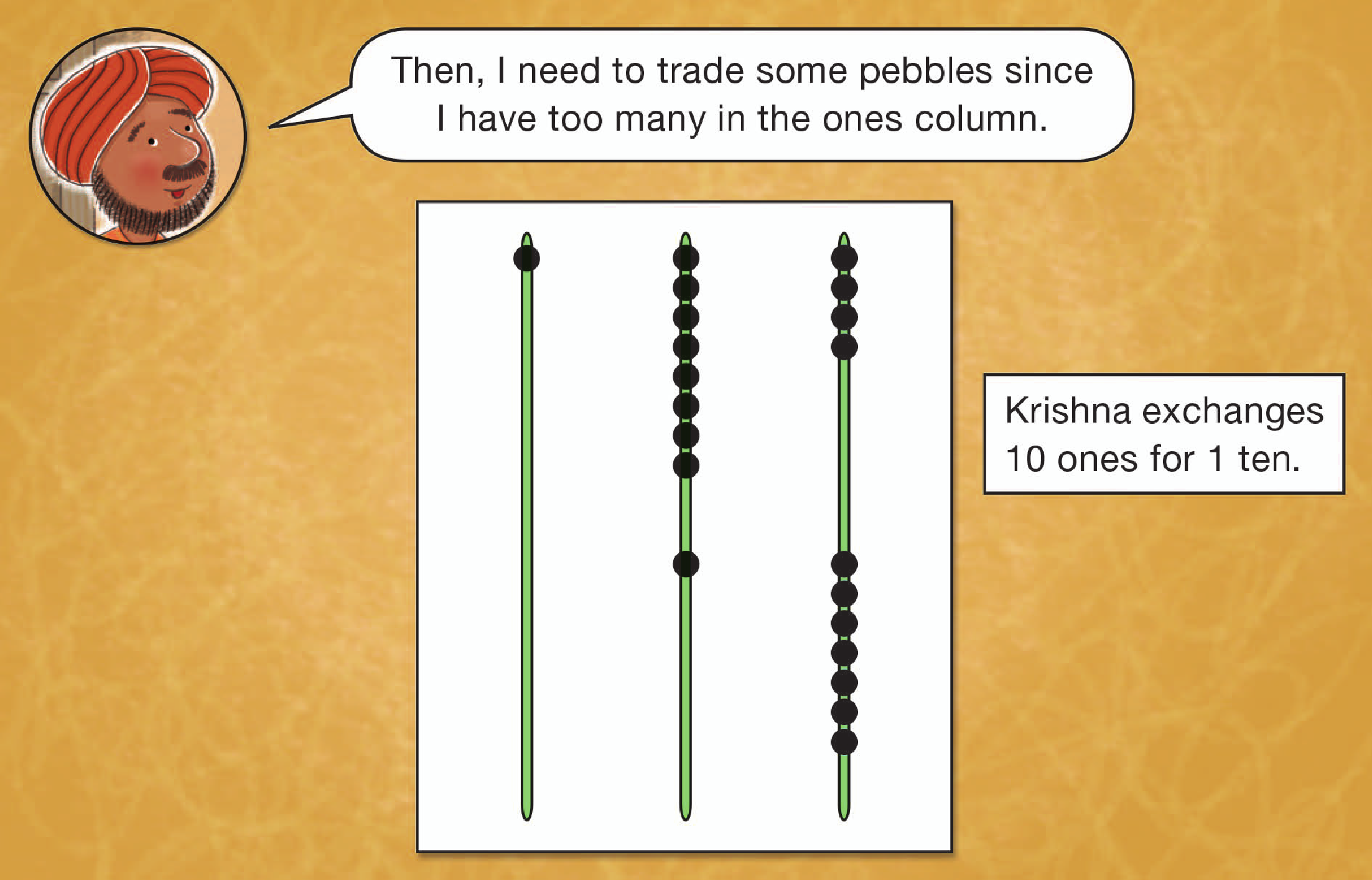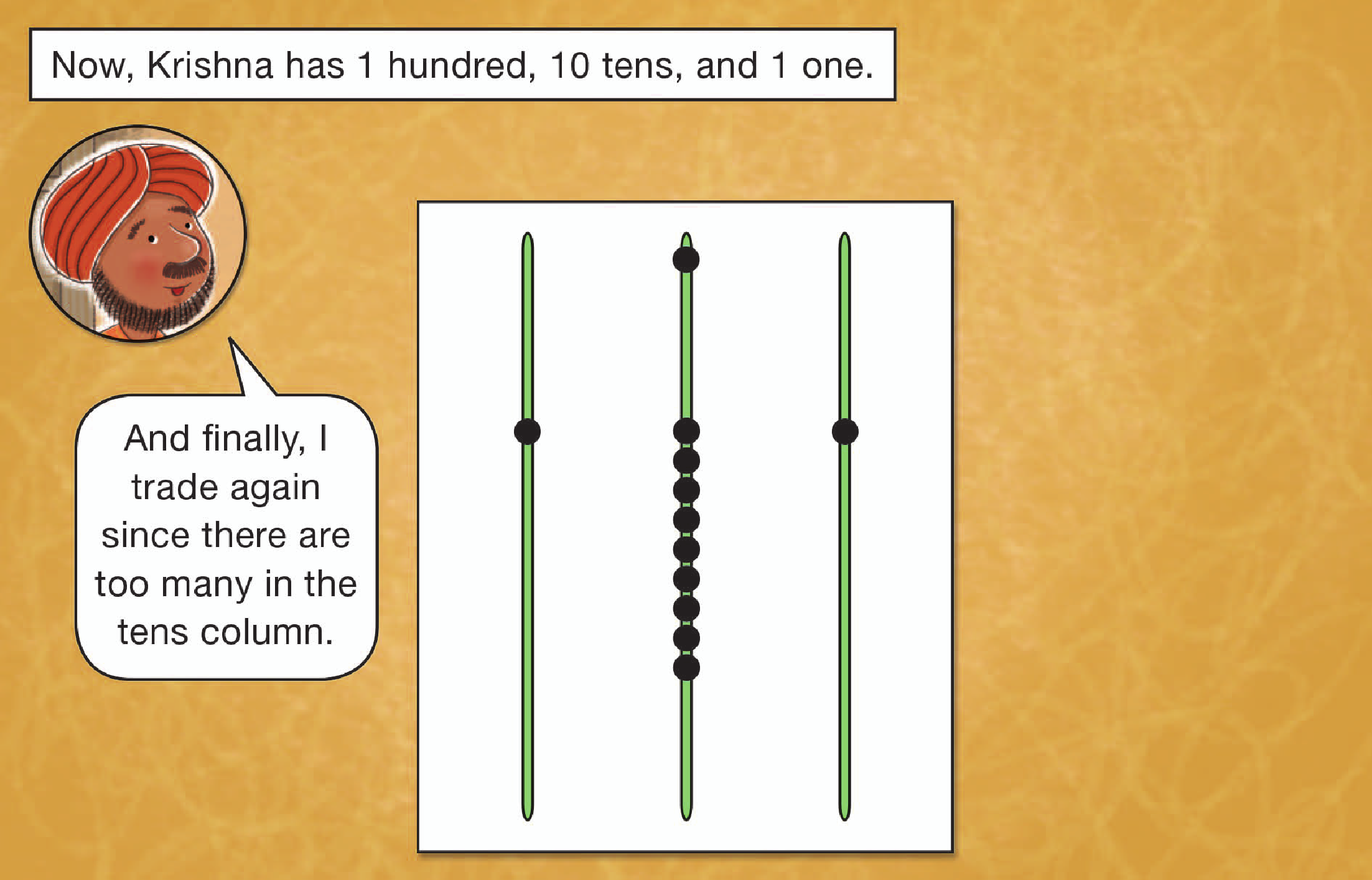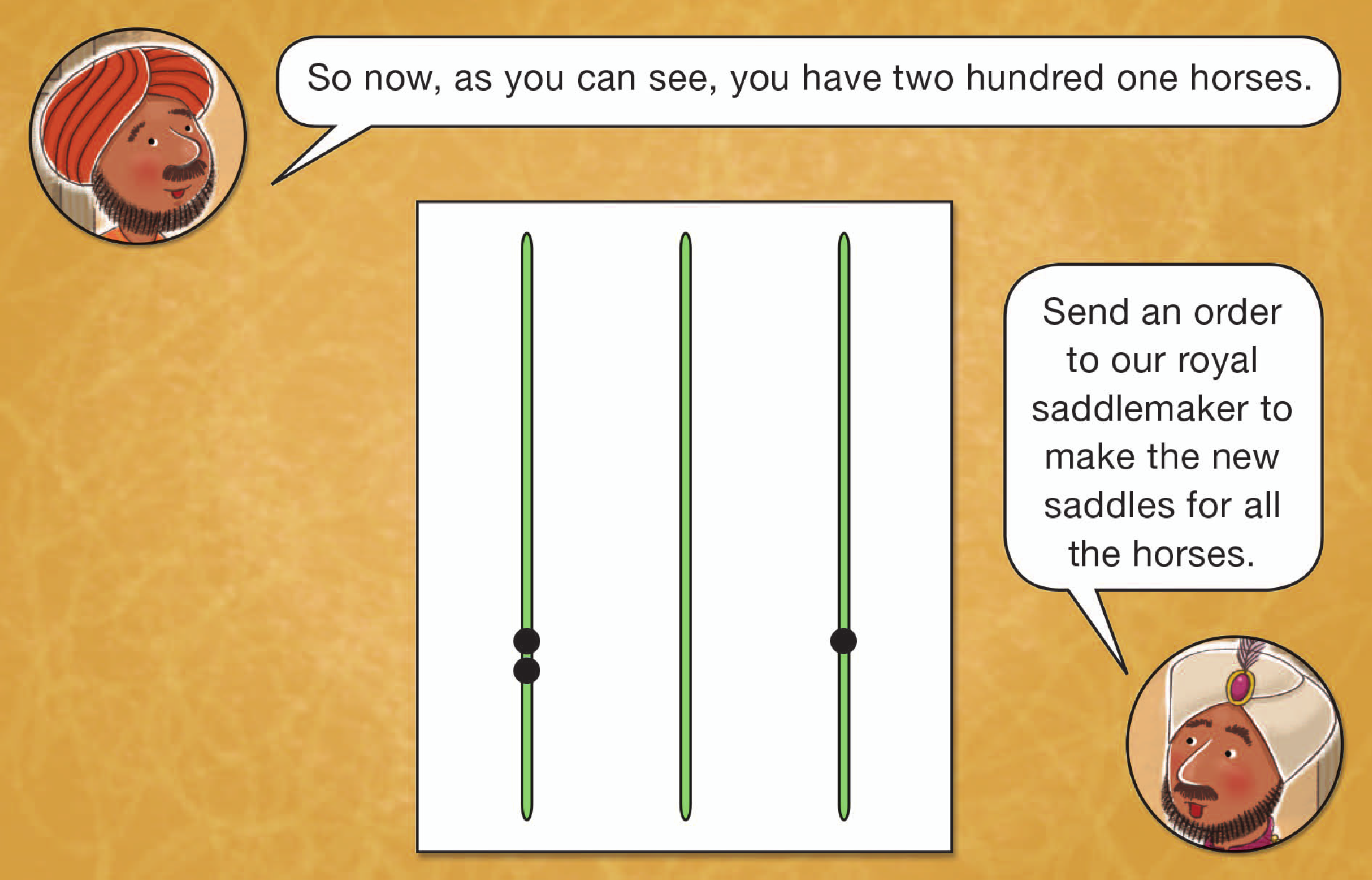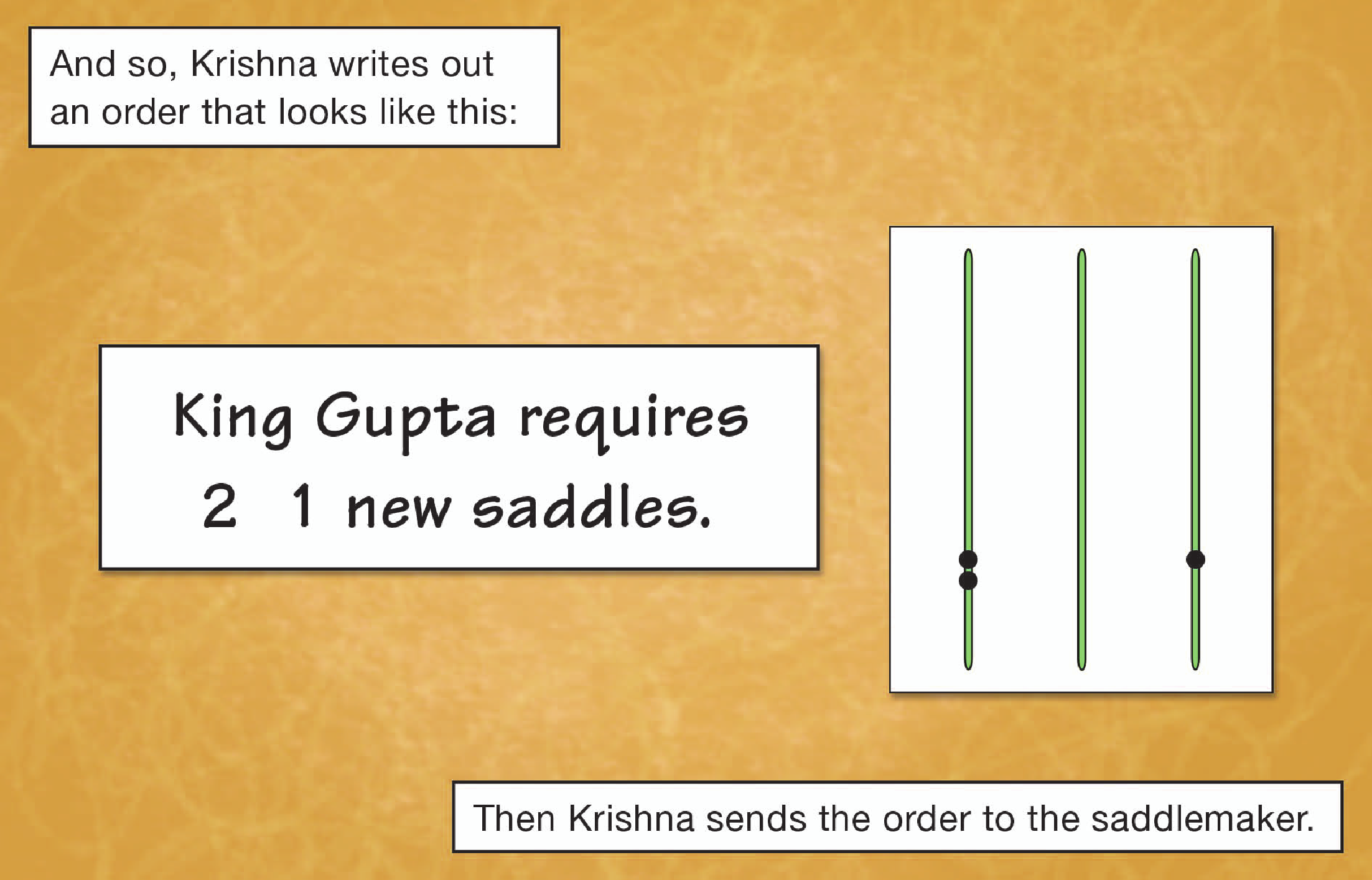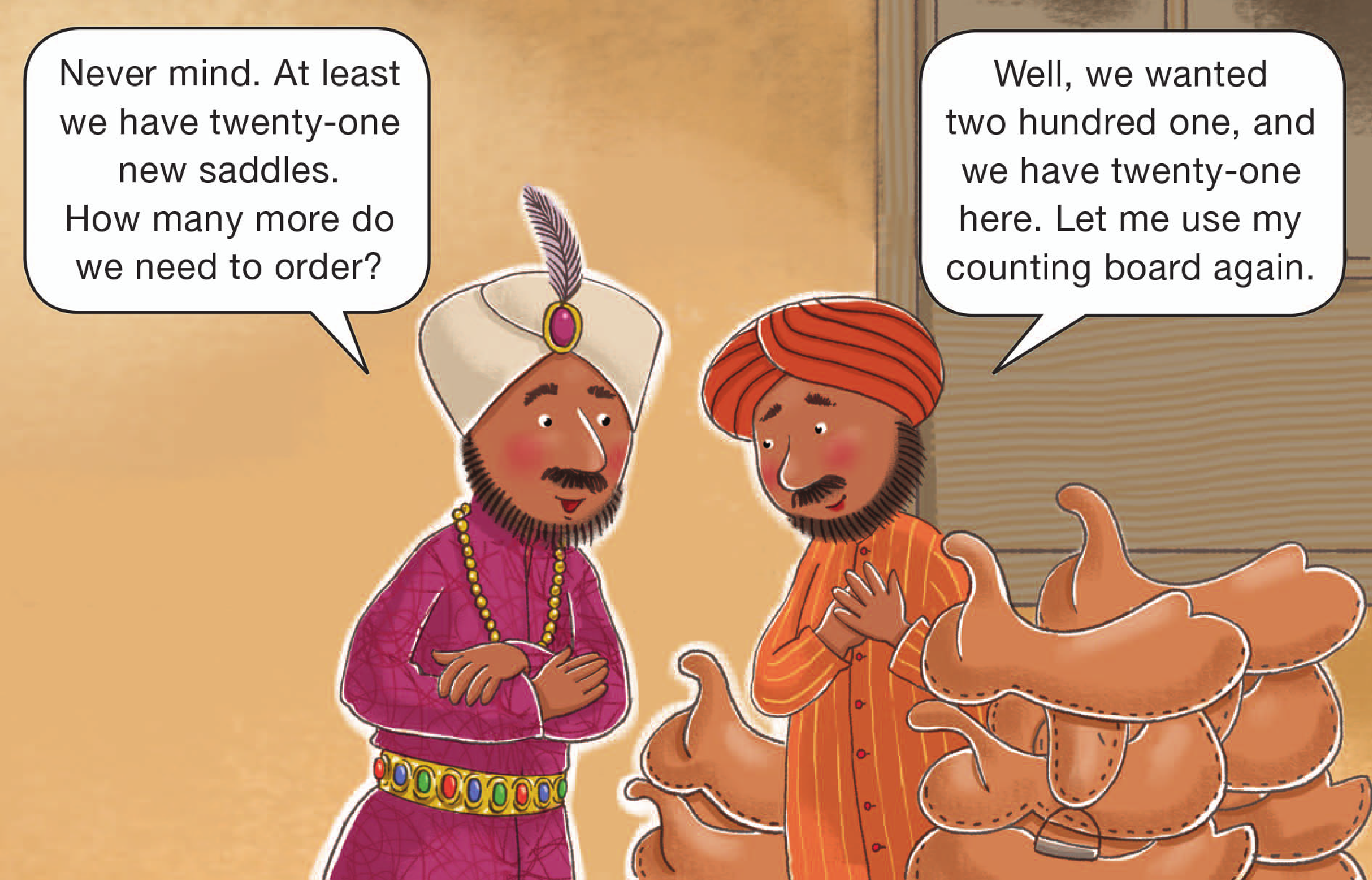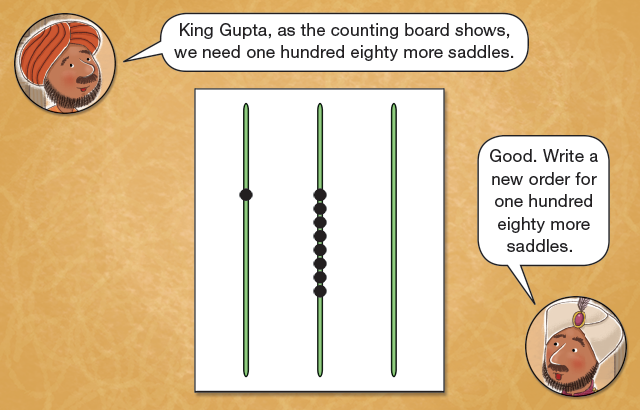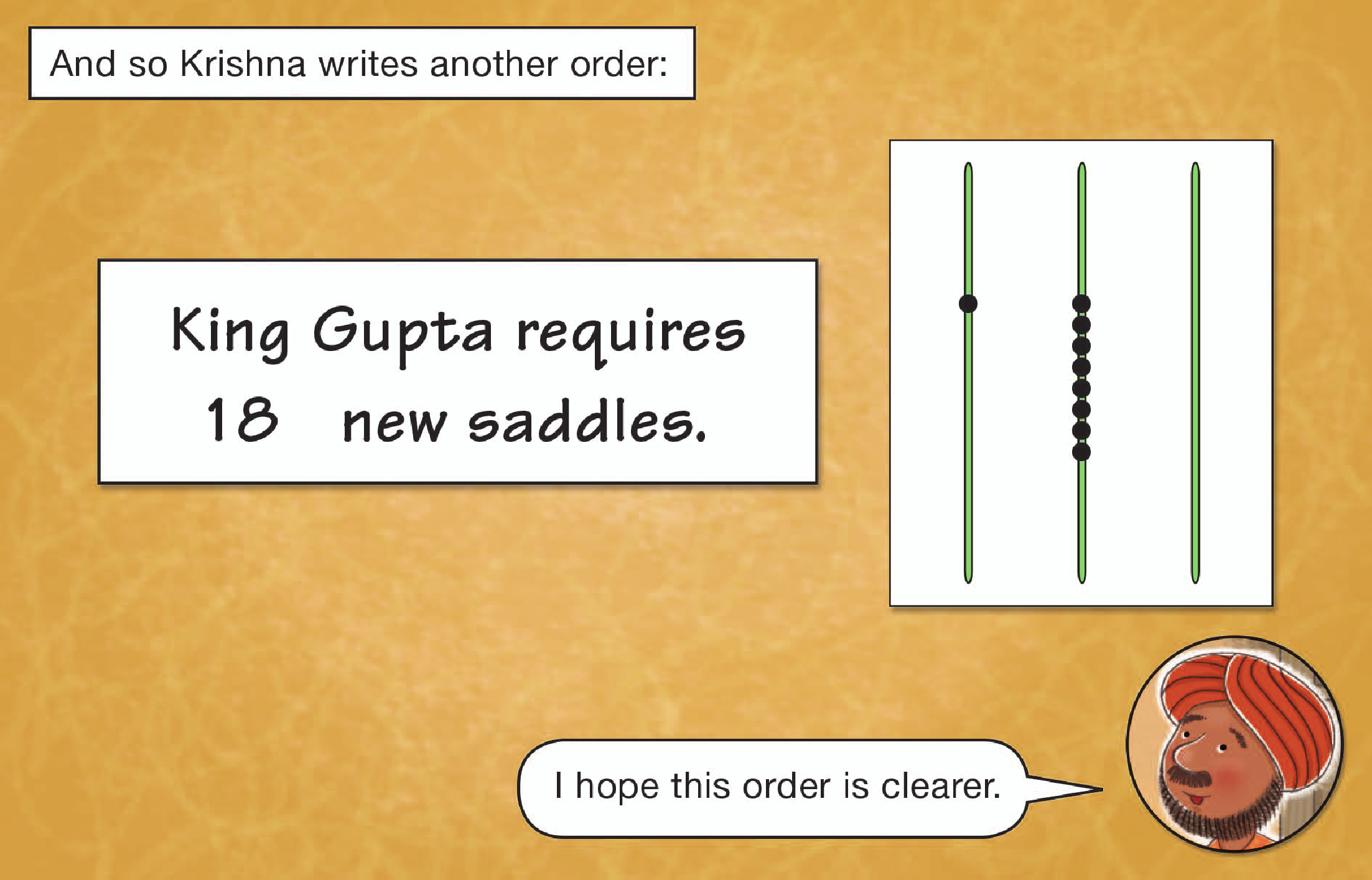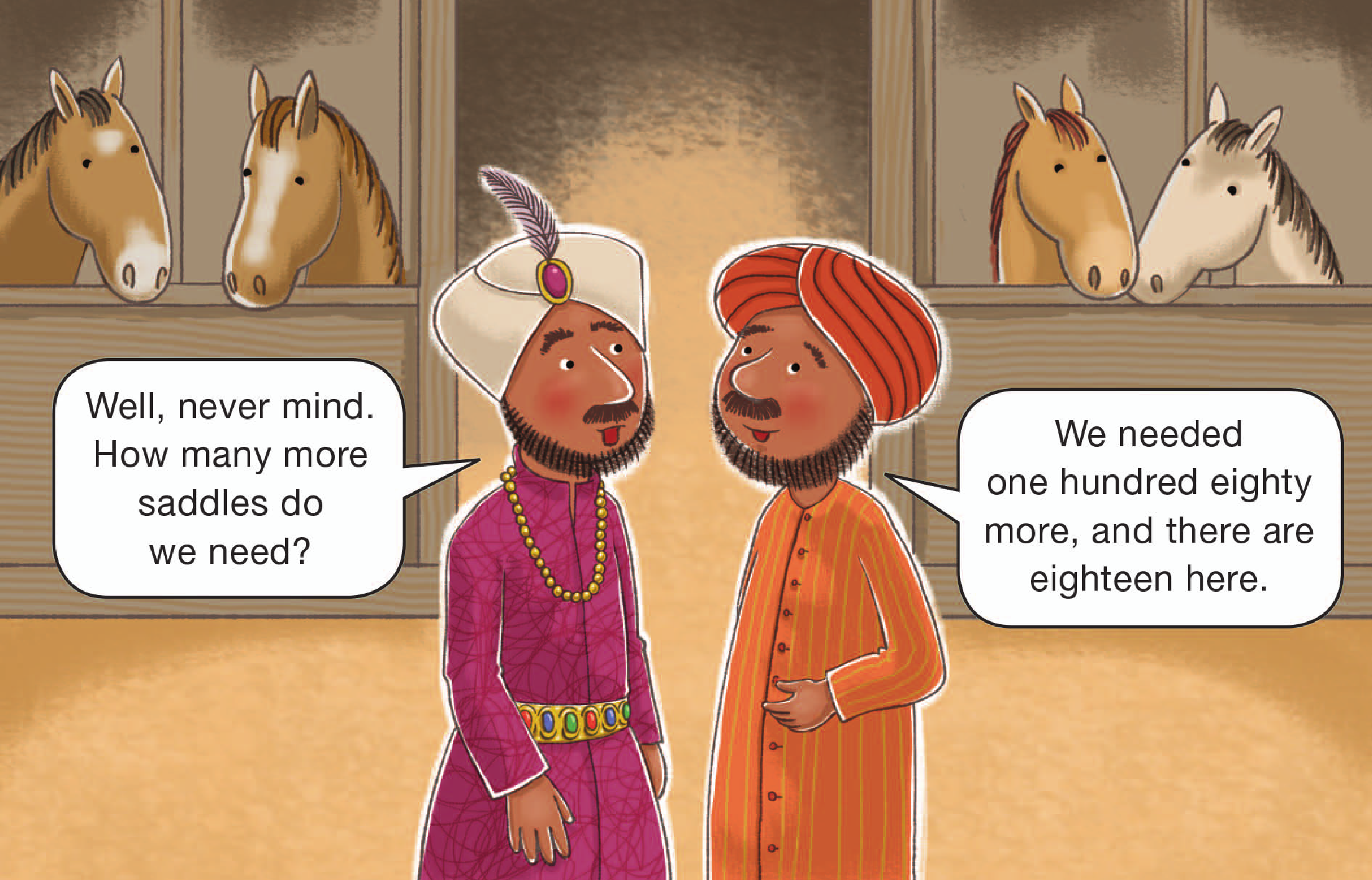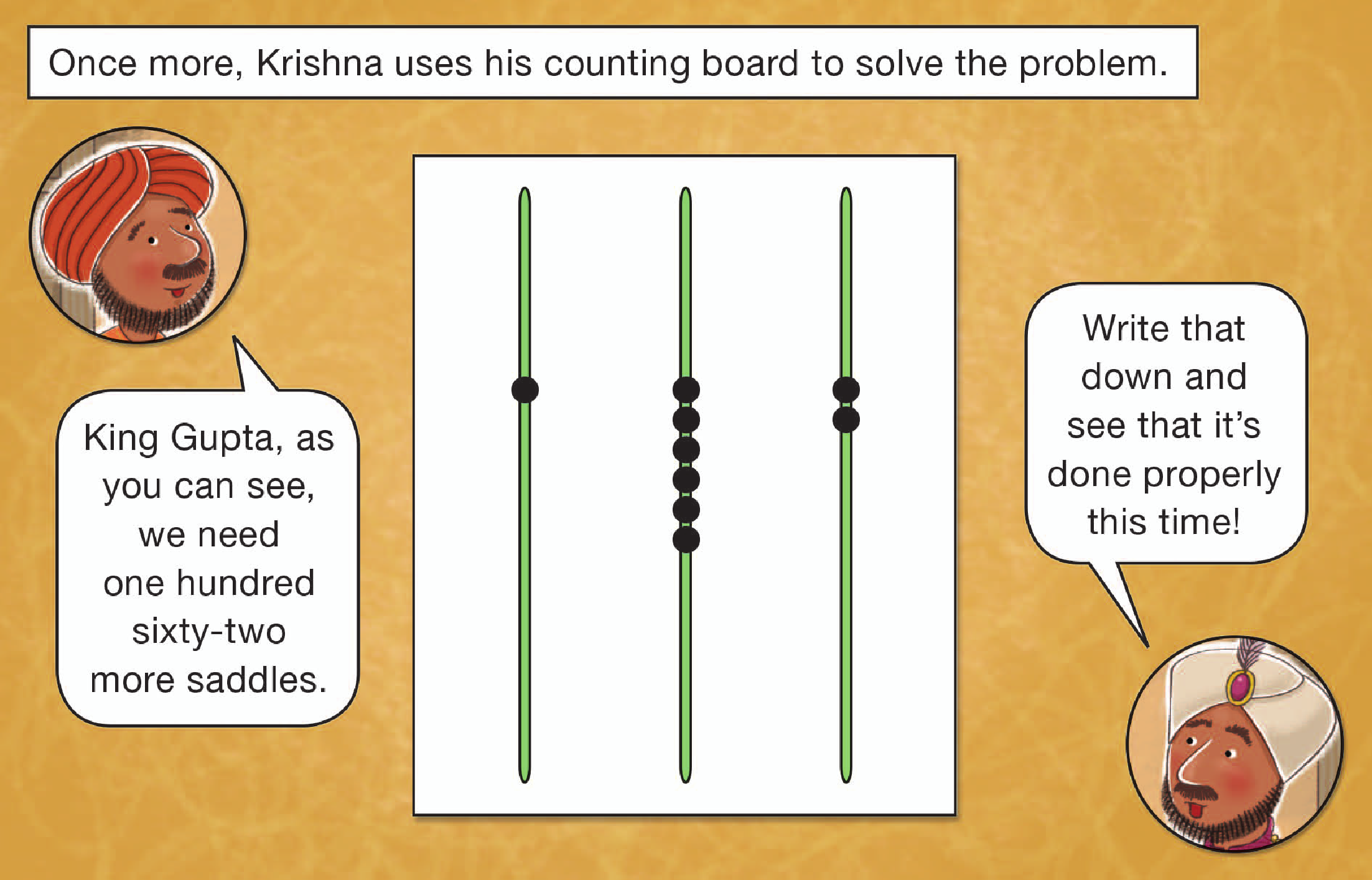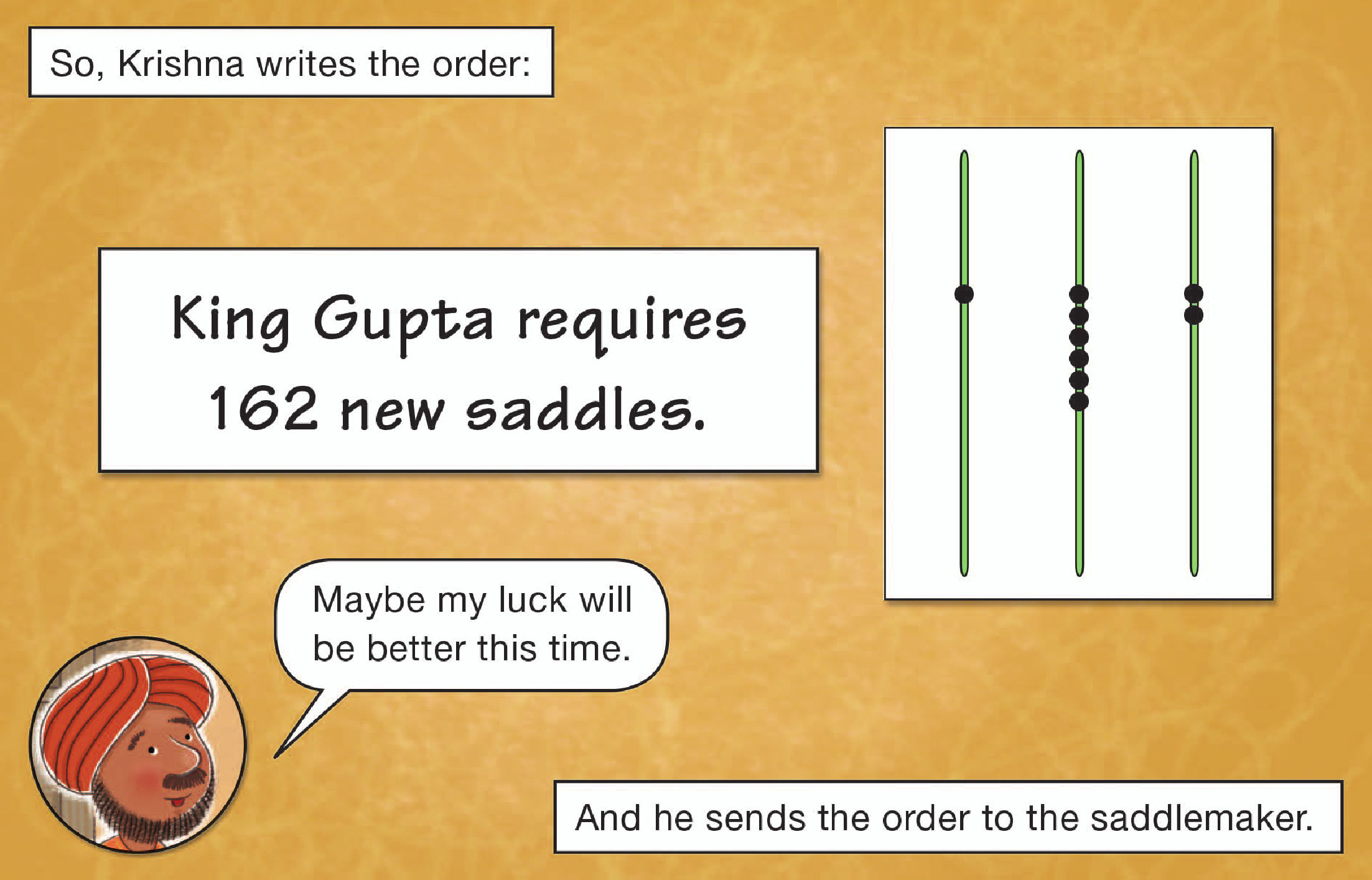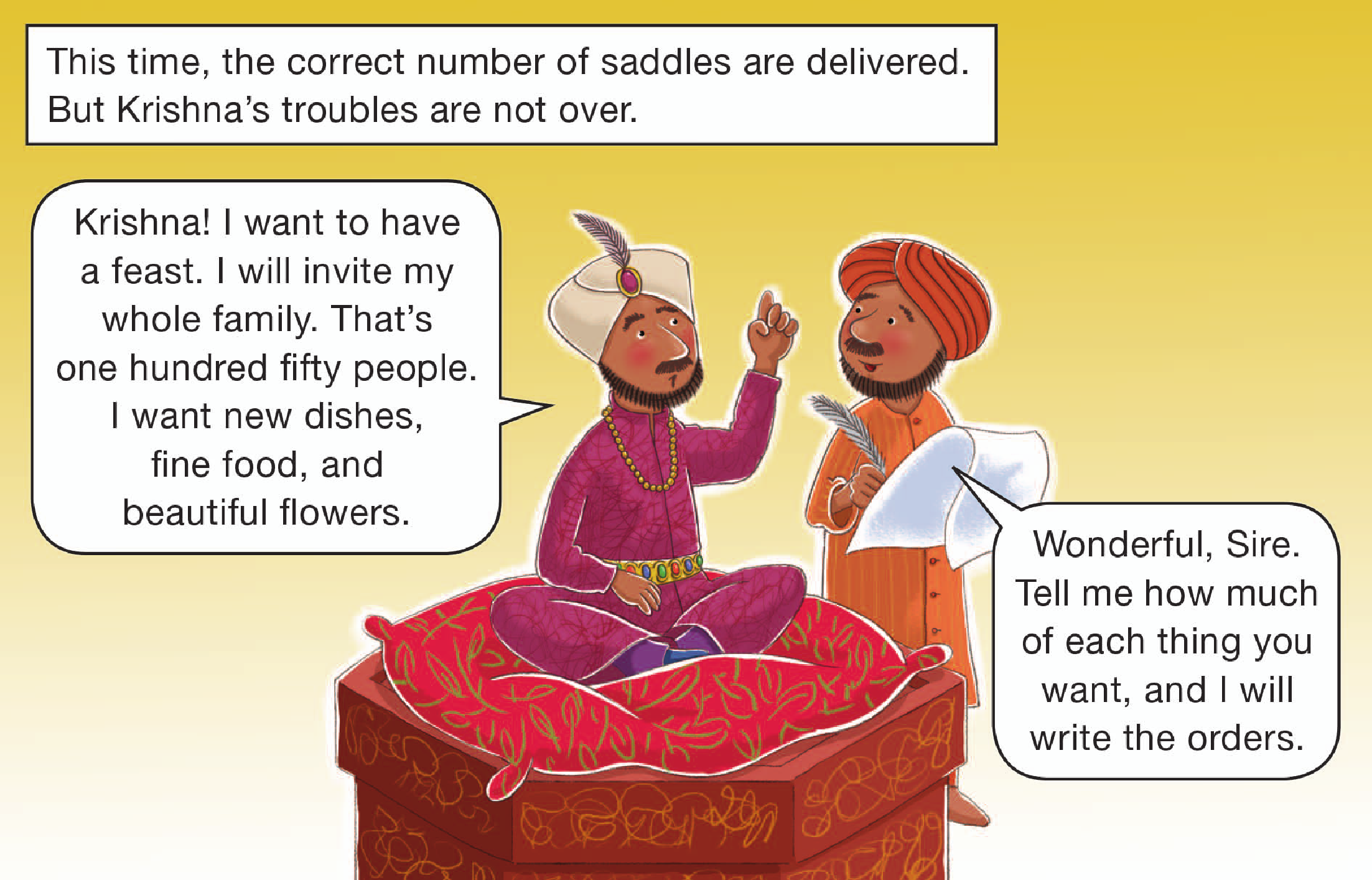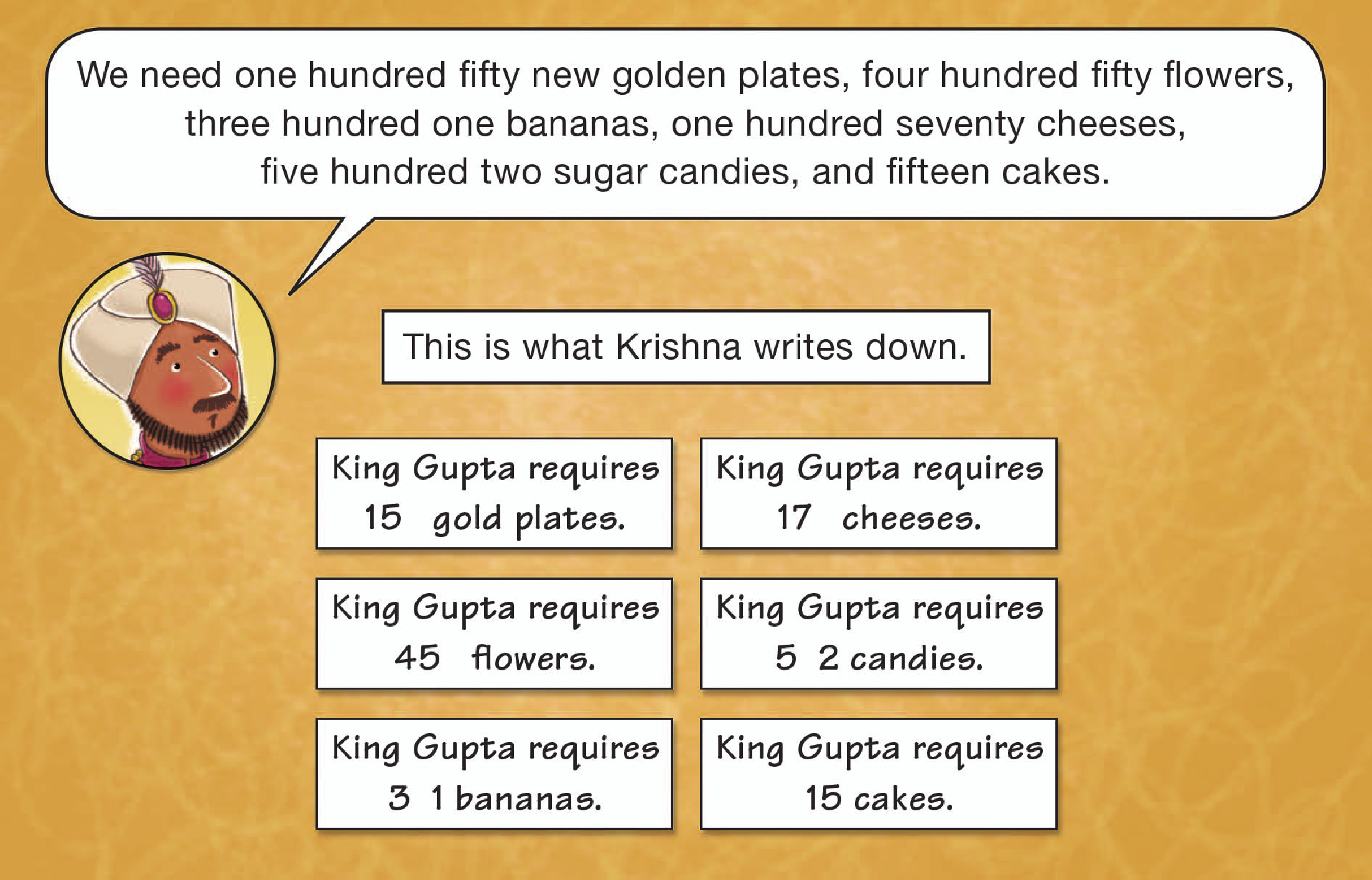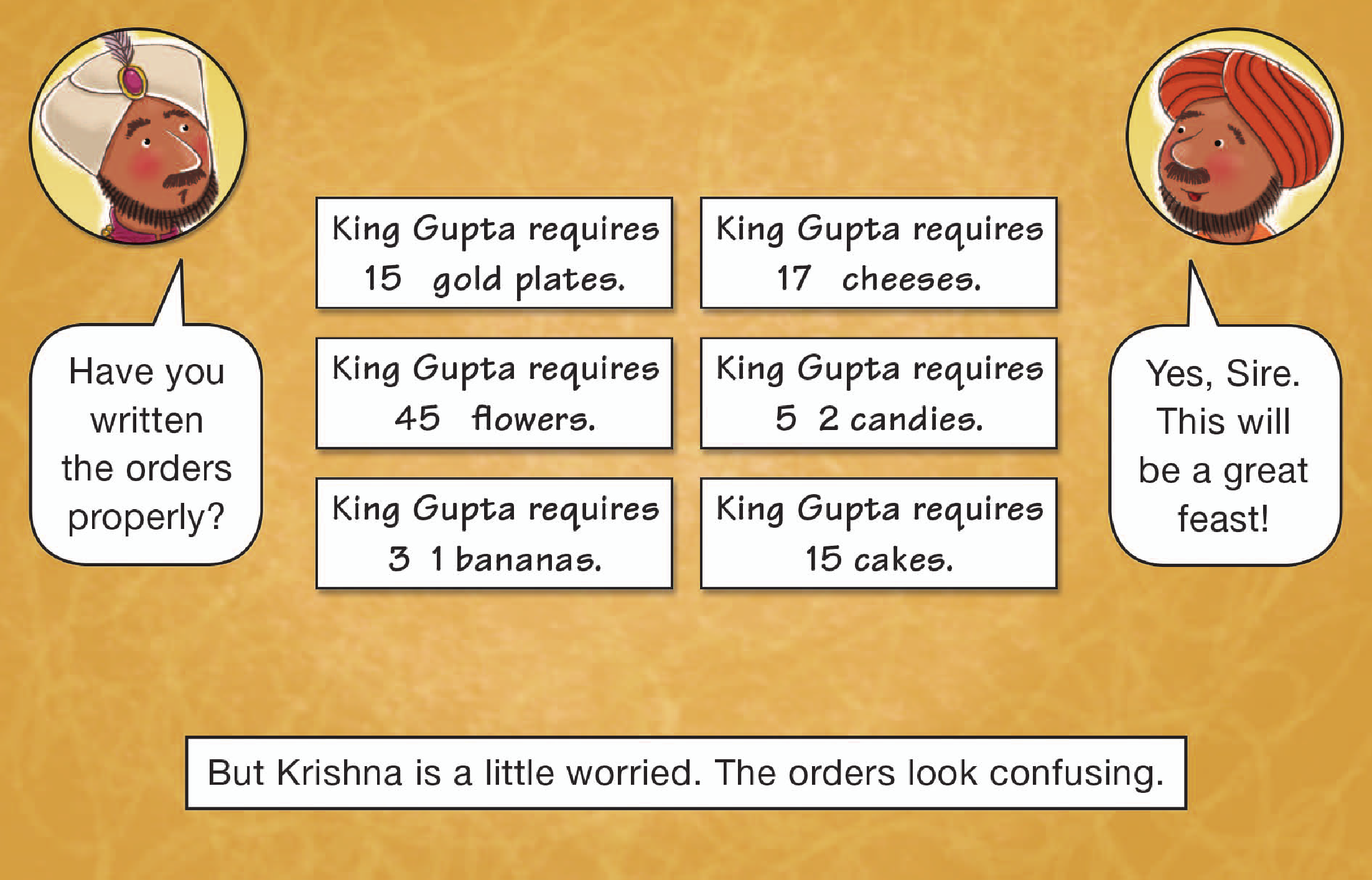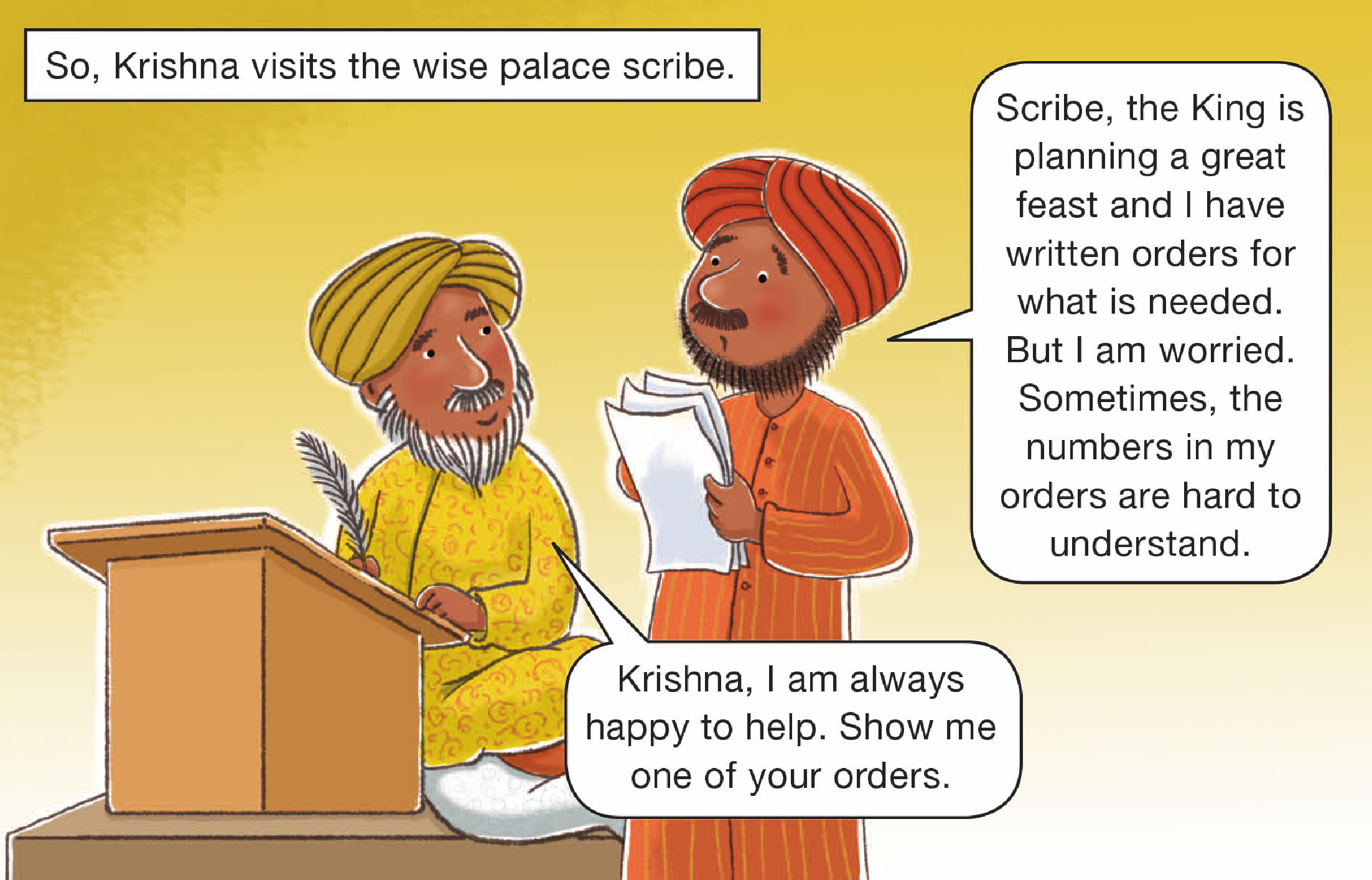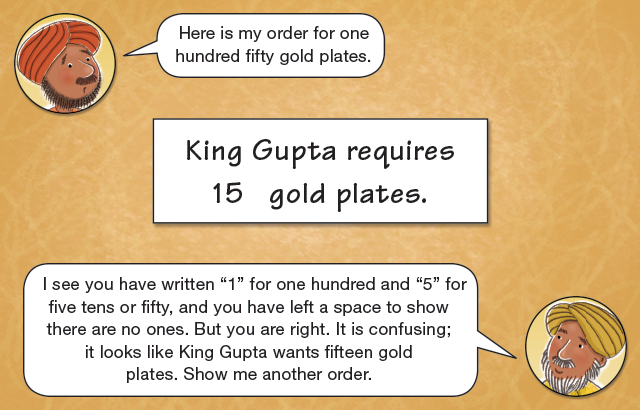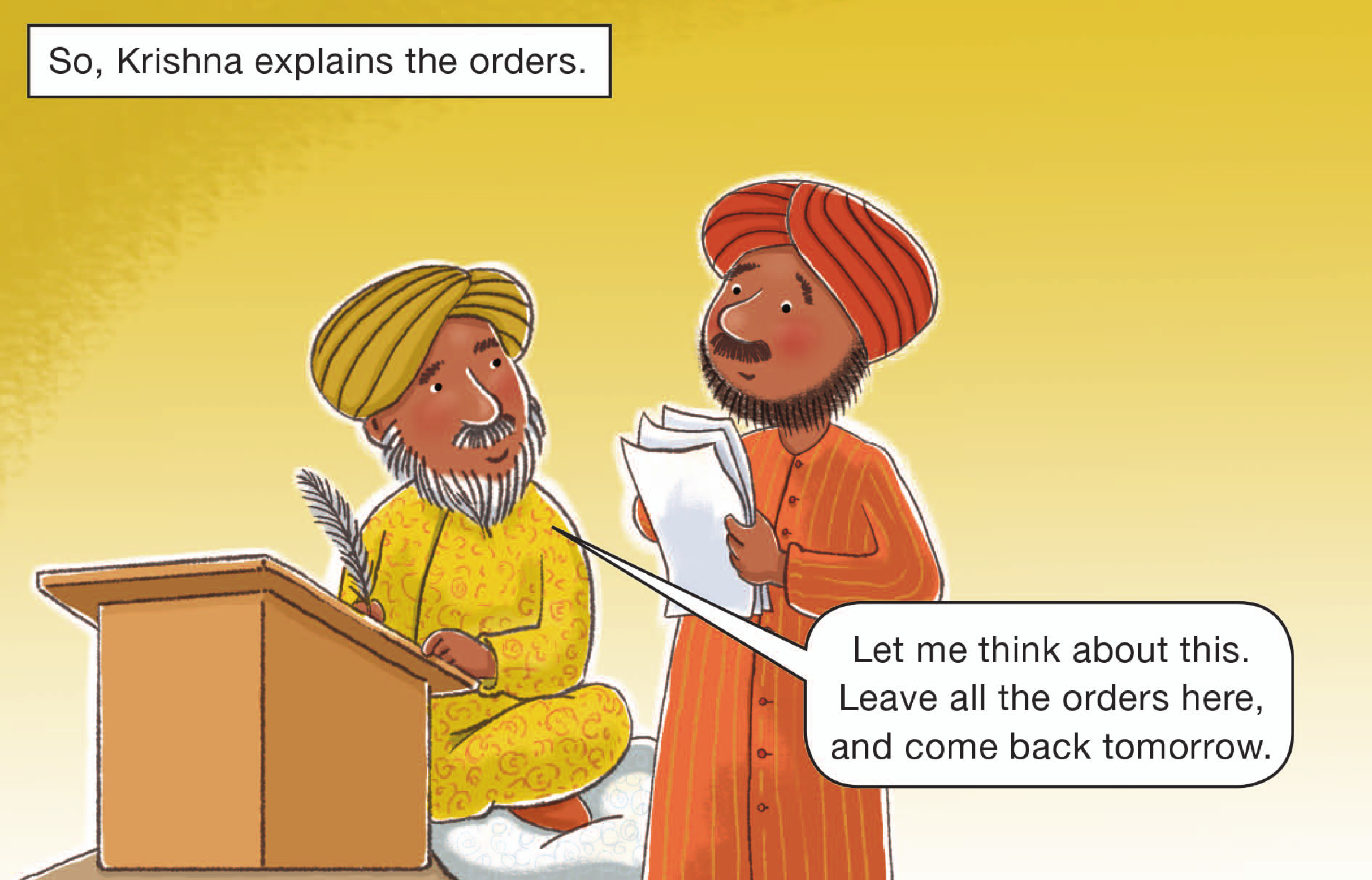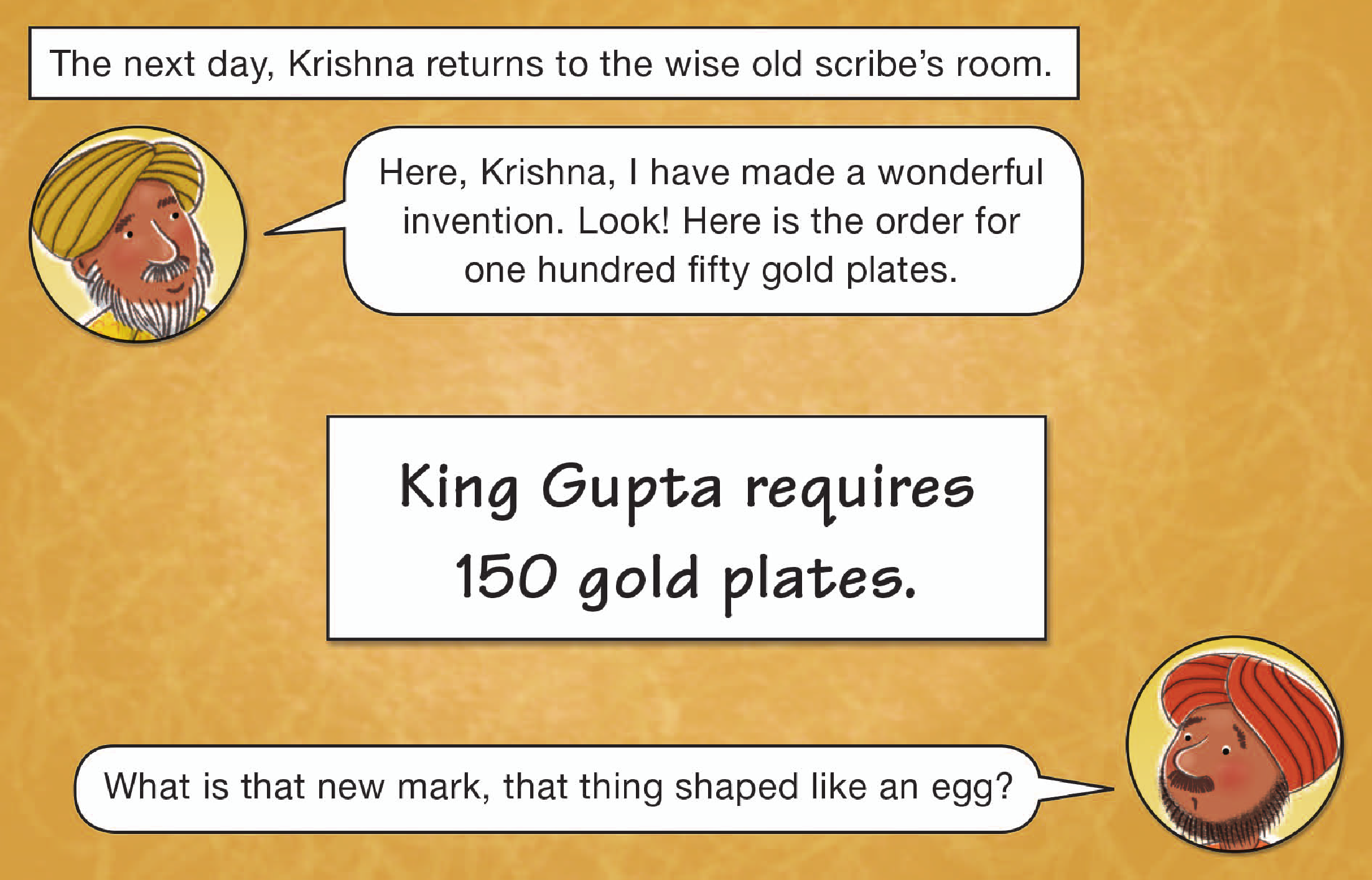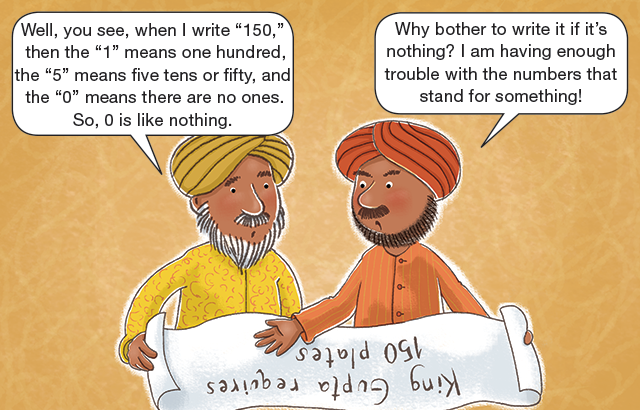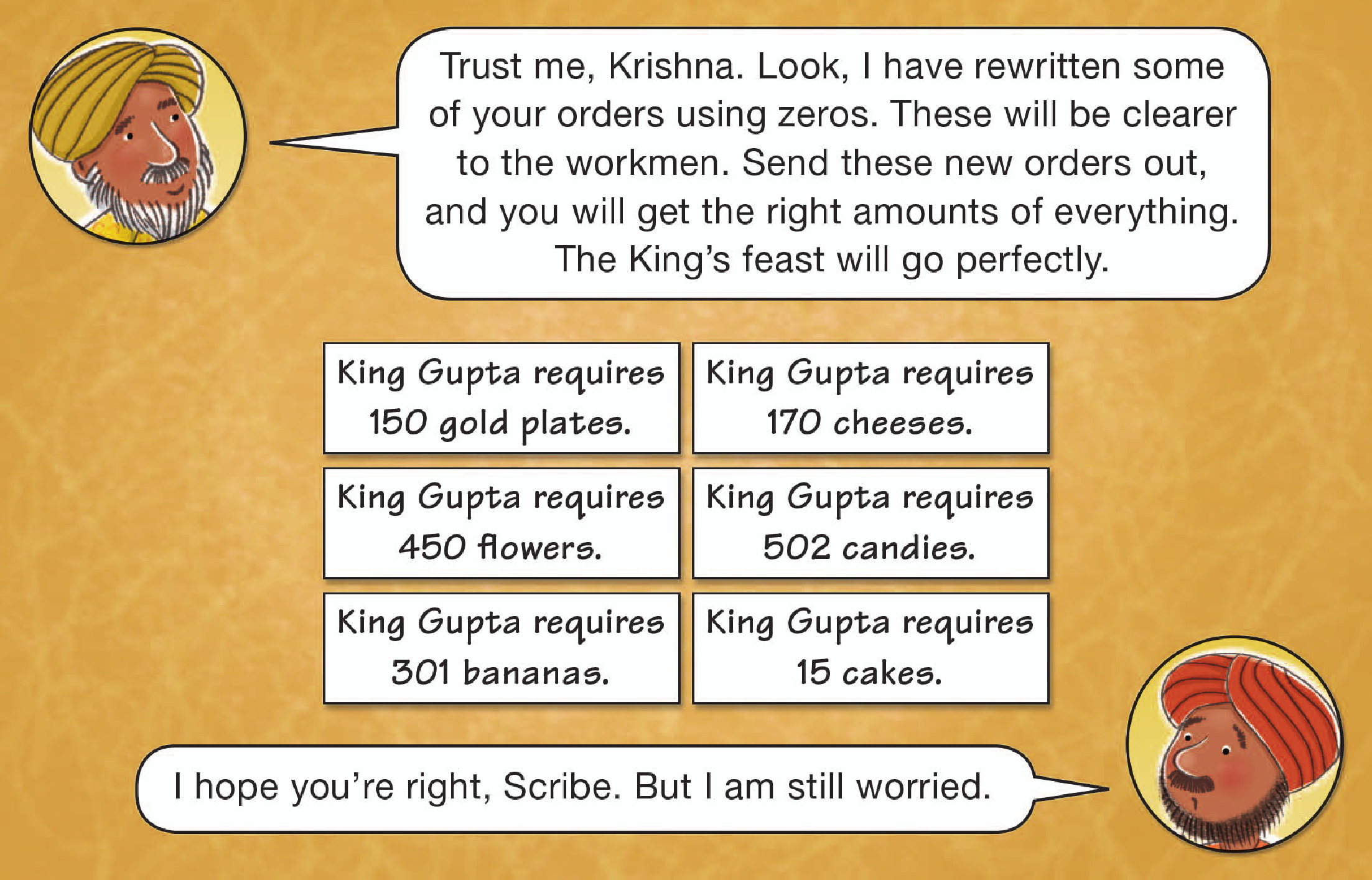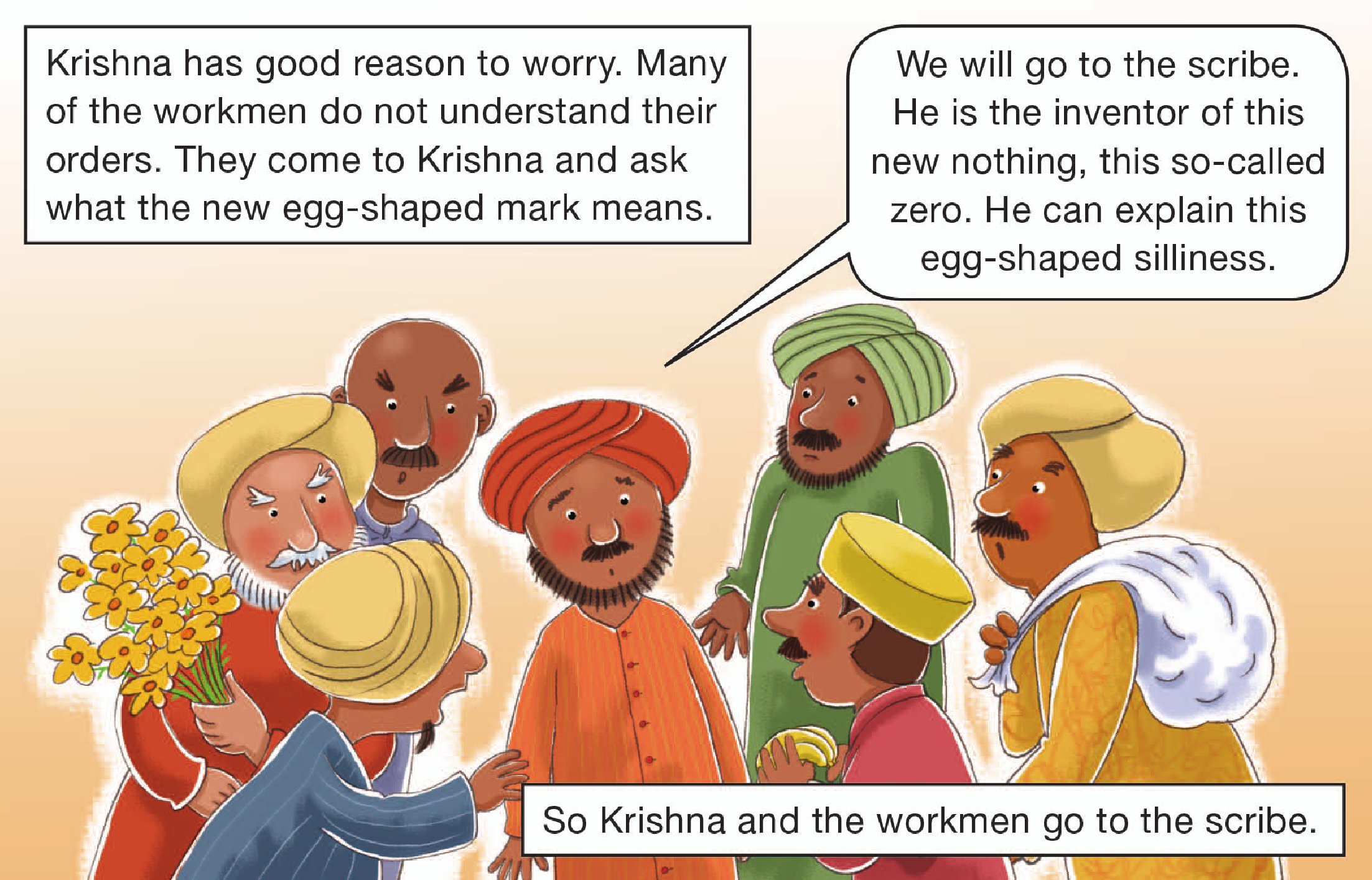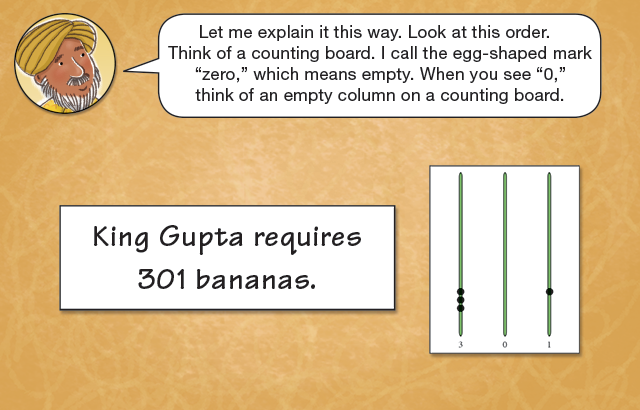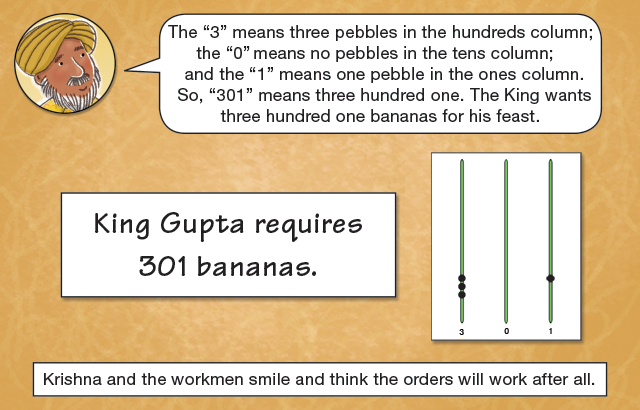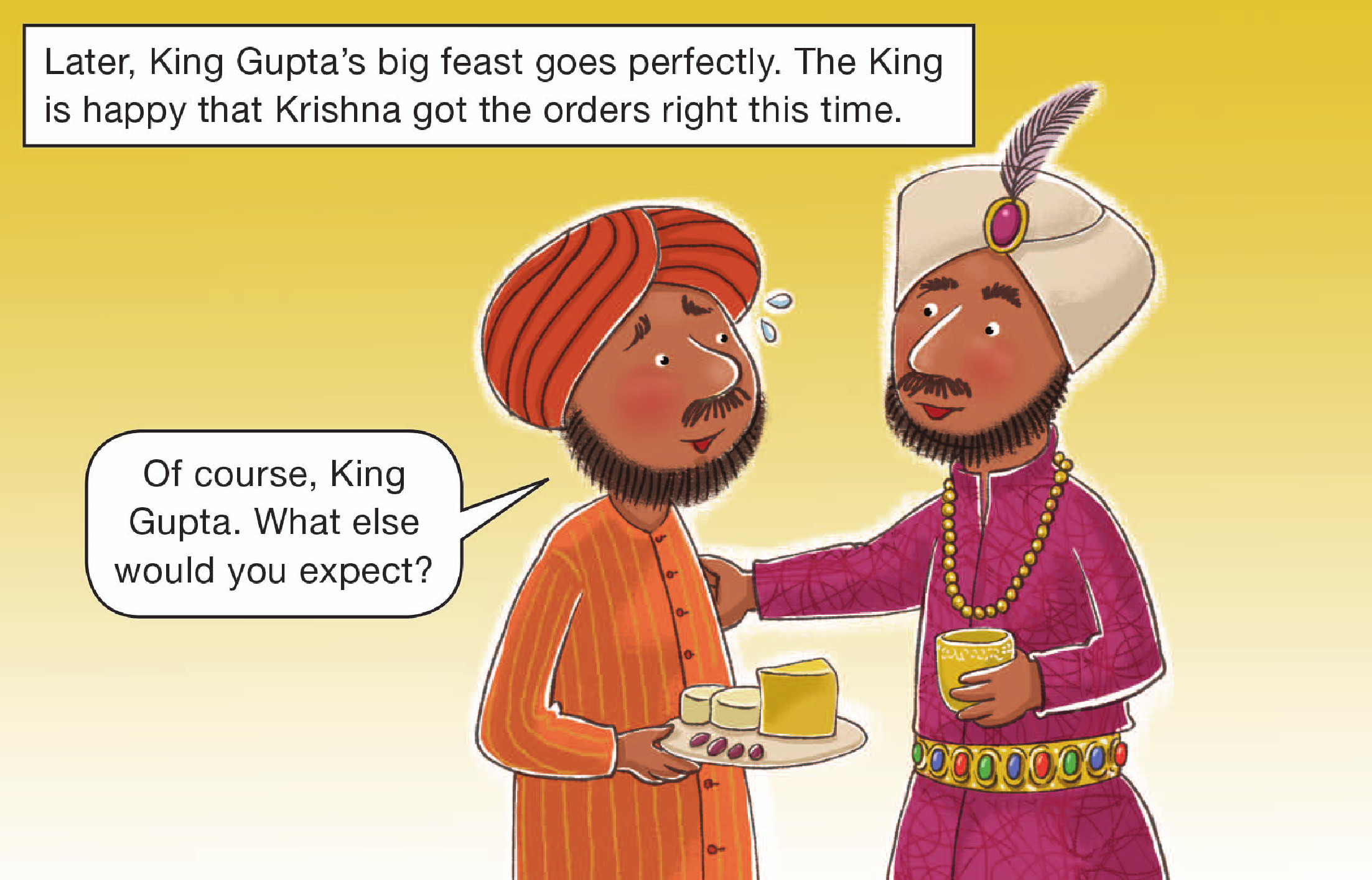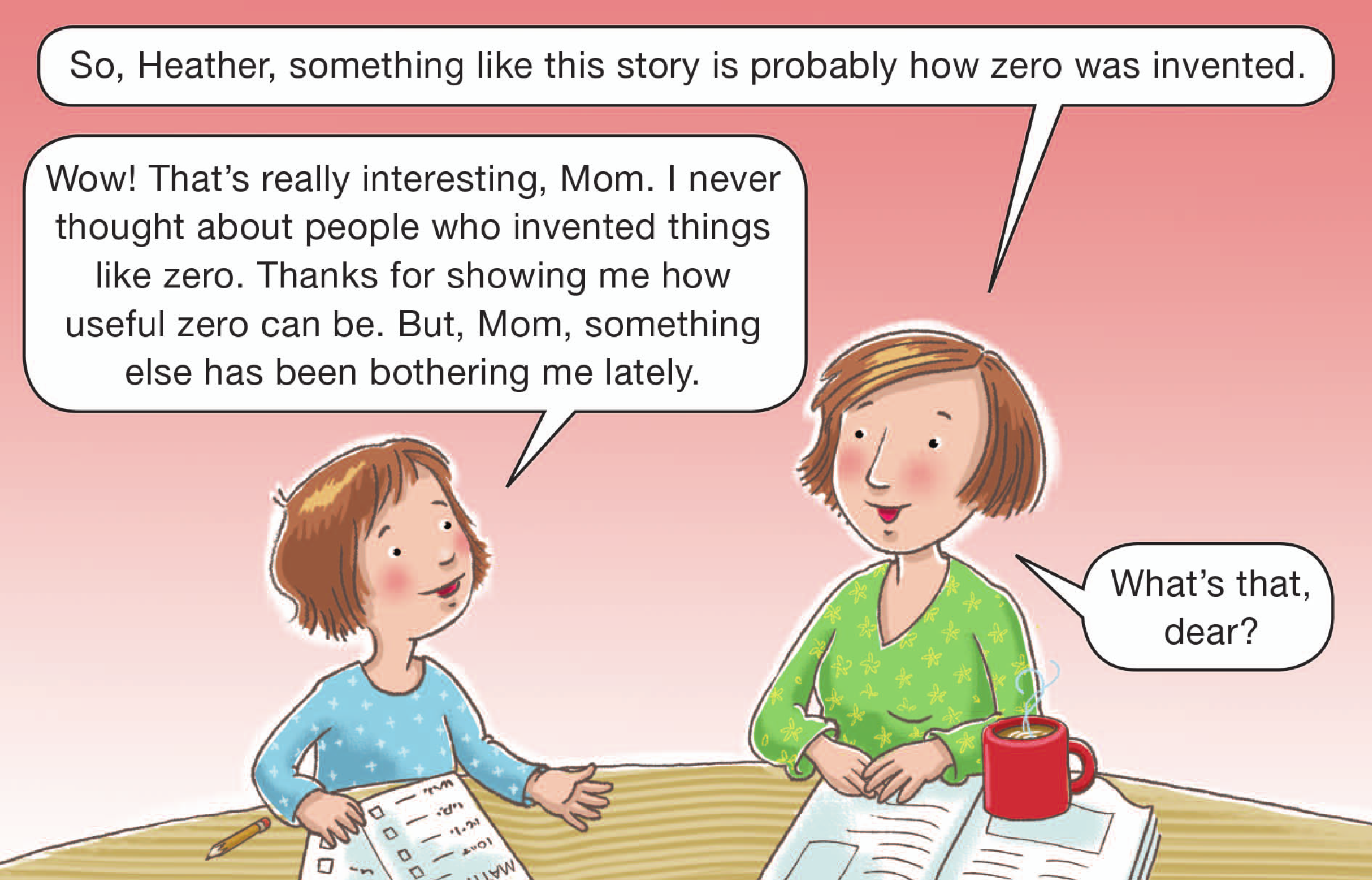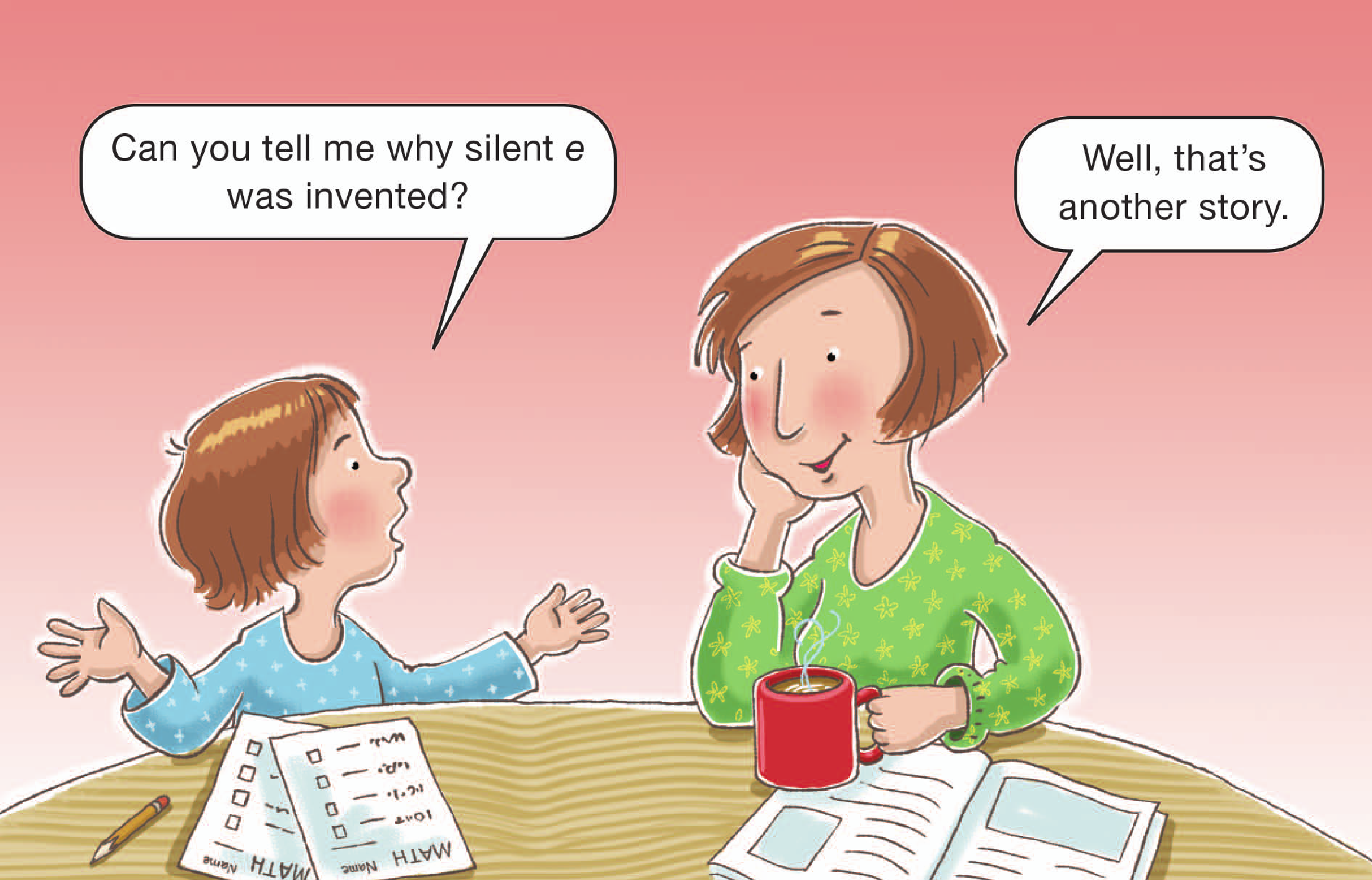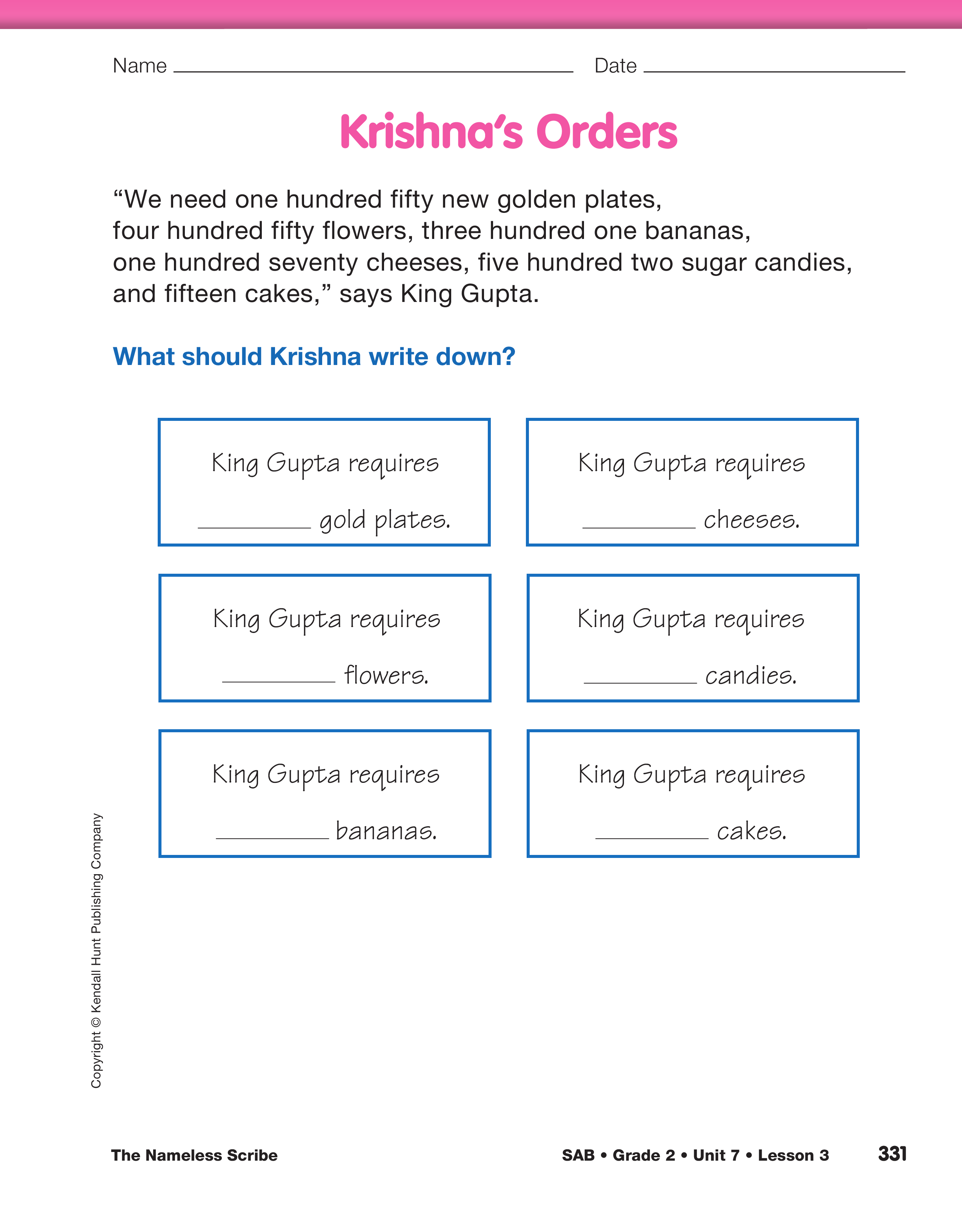The Nameless Scribe
Est. Class Sessions: 1–2Developing the Lesson
Introduce the Story. To begin the lesson, ask students to share their ideas about the symbol zero with the class.
Ask:
Tell students that you will read a story about how zero might have been invented. Note that the true story of the invention of zero is unknown. This story is historical fiction. Some of the elements are plausible (the north Indian setting, the role of scribes, the use of counting boards), but the details are pure fiction.
Choose one student to be a “scribe” as the story is read aloud. Explain to the class that a scribe is a writer. The class scribe will represent and display solutions to problems presented in the story for the class to see. The scribe will need a display set of base-ten pieces.
When the scribe is ready, write “300208” on the board or display and ask:
Begin reading “The Nameless Scribe” story aloud.
Page 5
The exact time and place of the invention of the symbol for zero is unknown. It probably took place in northern India about 600 ad. This is the setting for the story Heather’s mother tells.
Page 6
Counting boards like Krishna’s were widely used for computations for hundreds of year. Written symbols were used to record results of work carried out on counting boards.
The pebbles on a counting board are not fixed on wires as on a modern abacus, but are removable and fit in grooves incised on the surface of the board. The word counter comes from the custom of building such counting boards into tabletops in stores. Our words calculate and calculus come from the Latin calculi, pebbles, from the use of pebbles on such counting boards. The pebbles on the counting board are all the same size. The same pebble can stand for 1, 10, or 100 depending on which column it is in. The value of a pebble depends on its position, not its size.
Page 9
Ask:
Page 10
Ask:
Page 13
Ask:
Page 14
Ask:
Page 17
Ask:
Page 18
Ask:
Page 19
Ask:
Ask:
Ask:
Page 13
Ask:
Page 14
Ask:
Page 17
Ask:
Page 18
Ask:
Page 19
Ask:
Direct students to the Krishna’s Orders page in the Student Activity Book. Read the number of different items that the king tells Krishna to order for the feast aloud as students read along. Students will write the numbers on the order sheets.
After students have completed the page, return to the story. The scribe’s work is done at this point in the lesson.
Page 20
Ask:
Page 22
Ask:
Page 23–24
Ask:
Page 27–28
Page 29
Ask:
Page 35
Ask:
In this case, nameless does not mean that the scribe had no name, but that we do not know his name.















